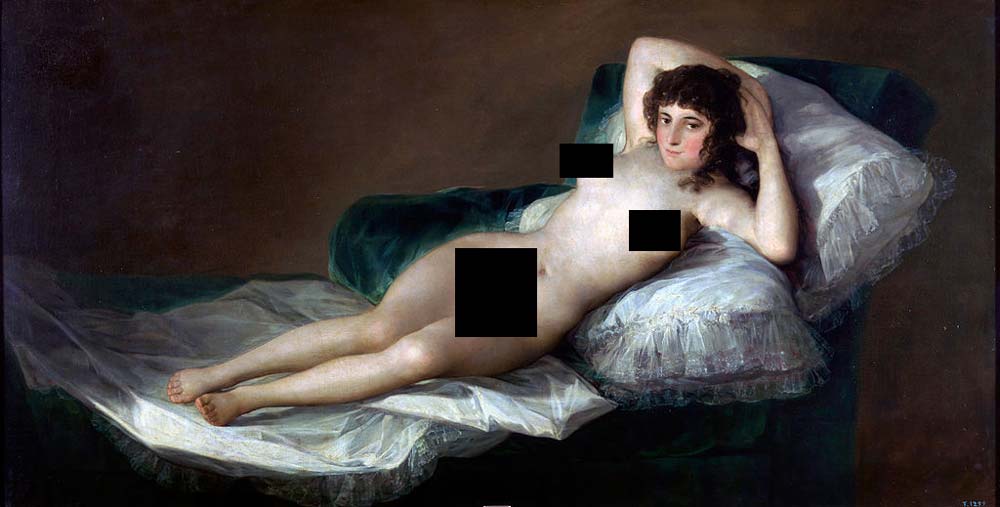| La Maja Desnuda | |
|---|---|
 |
|
| Artist | Francisco Goya |
| Year | circa 1797–1800 |
| Medium | Oil on canvas |
| Location | Museo del Prado, Madrid |
| Dimensions | 38 in × 75 in |
| 97 cm × 190 cm | |
| Famous Paintings by Goya | |
| Saturn Devouring His Son | |
| The Third of May 1808 | |
| La Maja Desnuda | |
| The Sleep of Reason Produces Monsters | |
| Witches’ Sabbath | |
| La Maja Vestida | |
| La Cometa | |
| The Forge | |
| The Dog | |
| Complete Works |
La Maja Desnuda is an oils on canvas painting by the Spanish painter, Francisco Goya. It is quite large, measuring 38 by 75 inches. The painting was acquired by the Museo del Prado in Madrid in 1910, and remains there to this day. It is not known when exactly Goya did the painting, but most estimates date it between 1797 and 1800, although some date it as early as 1792.
Composition
La Maja Desnuda translates into English as “the naked mistress” or “the nude mistress.” As the name suggests, the subject of the painting is a naked female. She is depicted lying seductively on a couch.
Her two arms are raised, with her hands behind her head, she has a slight smile, and her two cheeks are noticeably rosy. Her body is tilted towards the viewer. The painting is somewhat unusual in that her pubic hair is depicted. In most western classical paintings up to that time, pubic hair was not to be shown.
All the lighting focus of the painting is on the nude herself and the surface of the couch. The background to the painting is mainly dark and shows no other objects other than a plain wall.
History of the painting
The first recorded owner of the painting was the then Spanish prime minister, Manuel de Godoy, giving rise to unfounded speculation that the subject may have been his mistress.
Goya was brought before the Spanish Inquisition in 1815. The Inquisition felt the painting was immoral and they tried to determine who had commissioned the artist to do the nude painting from Goya. The result of their inquiry is unknown.
Second Version
Goya painted a nearly identical work called La Maja Vestida, which translates as “the clothed maja.” It is almost an exact copy of La Maja Desnuda, the principal difference being that in La Maja Vestida, the barefoot subject is fully clothed. The second version is also in the Museo del Prado, and the two paintings are usually displayed side by side.